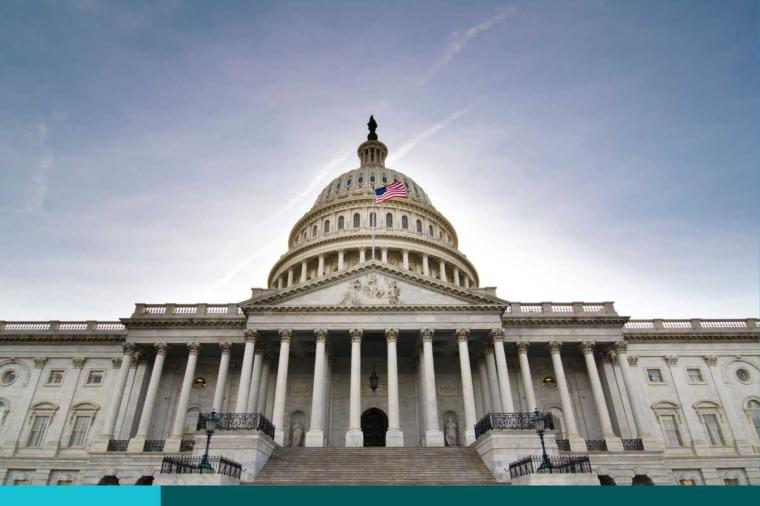Opportunities in the Cybersecurity Workforce Shortage Environment

The United States is facing a significant cybersecurity workforce shortage, with NIST identifying over 500,000 open cyber positions and estimating there are 74 workers for every 100 cyber jobs. This shortage threatens both the nation’s private sector security profile and federal agencies struggling to compete for cybersecurity professionals. As such, the government is working to support cyber education in the United States. In the meantime, departments will also likely need to implement cyber solutions that can aid in accommodating for the workforce shortfall. IT companies will find opportunities provided by federal funding for cyber education programs, and the government’s need for cybersecurity professionals during such a severe cyber workforce shortage means plenty of opportunities for savvy companies.
Workforce Development Programs
The federal government is working to address this cyber workforce shortage through the support of various cybersecurity workforce development initiatives. In September of 2025, for example, NIST announced the awarding of 17 cooperative agreements with a combined value of over $3.3M to organizations in 13 states to address the cyber professional shortage through its Regional Alliances and Multistakeholder Partnerships to Stimulate (RAMPS) Cybersecurity Education and Workforce Development program. These recipients include both private sector organizations and publicly funded higher-education institutions. NICE, the National Initiative for Cybersecurity Education, is responsible for overseeing the grants.
IT companies targeting the public education space would do well to keep appraised of which education organizations have obtained funding for cyber workforce development initiatives and selectively target these organizations for educational products tied to teaching cybersecurity skills. As these programs grow, they may also create opportunities for other edtech solutions for use in class management, planning, communication and more. Additionally, since these programs are specifically designed to teach cybersecurity, these educational organizations may need additional cybersecurity tools for use in hands-on educational environments and methods to simulate various cybersecurity issues which students may need to learn to address.
It is worth noting that NICE, the NIST organization overseeing the aforementioned grants, has a framework which includes tracking and planning workforce capabilities and gathering workforce data and research trends. NICE will likely want solutions to track its recipient’s success and continue to monitor cybersecurity workforce trends. NICE also manages projects for cybersecurity education at the high school and professional level, including internships and apprenticeships, creating additional funding for publicly funded education programs which vendors may be able to take advantage of.
NIST grants are not the only indicator of the government’s focus on the cyber workforce shortage. In February 2025, the Cyber PIVOTT Act was reintroduced in the House and, should it pass, would create a scholarship program at community colleges and technical schools for cybersecurity students in exchange for required government service. Such a scholarship program may create opportunities for vendors selling solutions to monitor grant recipients for compliance.
Federal Workforce Impacts
In addition to creating opportunities at educational institutions for cybersecurity education, the cyber workforce shortage has had an impact on federal government operations. Two federal representatives introduced a bipartisan bill entitled the Cybersecurity Hiring Modernization Act in August of 2025. This bill would require the Office of Personnel Management to update its website with changes to minimum education qualifications for cybersecurity positions and provide data on educational attainment for those in cybersecurity positions. This bill demonstrates some lawmakers are considering lowering minimum requirements for workers in cybersecurity roles within the federal government, likely to account for the nation’s cyber workforce shortage. Should this law pass, vendors may find opportunities selling data solutions for use in tracking the qualifications of cyber workers in the federal government. Even if it does not pass, there may be additional opportunities within the federal government to look at how to expand its cyber workforce candidate pool, creating potential opportunities for IT vendors selling workforce data solutions.
Additionally, as government agencies struggle to account for a lack of skilled cybersecurity professionals, IT companies may find opportunities selling easy-to-use or automated cybersecurity solutions. Vendors and partners should emphasize if their solutions require few cybersecurity professionals to implement and manage, and companies may find additional interest in cybersecurity solutions that can easily be used by IT workers whose backgrounds may not be directly tied to cybersecurity. Government hiring freezes and workforce reductions have further hampered the government’s ability to adapt to the cyber workforce shortage, creating even greater demand for low-maintenance and easy-to-use systems. In addition to easy-to-use systems, government agencies may benefit from managed security services to outsource some of their cybersecurity needs.
Suffice to say, the government’s interest in confronting the nation’s current cybersecurity professional shortage creates a plethora of opportunities for IT companies from managed security services, automated cybersecurity solutions and edtech for use in cybersecurity education programs. As the government continues to invest money into solving these workforce issues, more opportunities will likely arise, meaning taking an interest now may give IT companies a head-start for the future.
To get more TD SYNNEX Public Sector Market Insight content, please visit our Market Intelligence microsite.
About the Author:
Gabriel is a Sr Market Insights Data Analyst at TD SYNNEX Public Sector whose work focuses on using quantitative and qualitative analysis to provide actionable insights to TD SYNNEX’s vendors and resellers in the public sector.



















